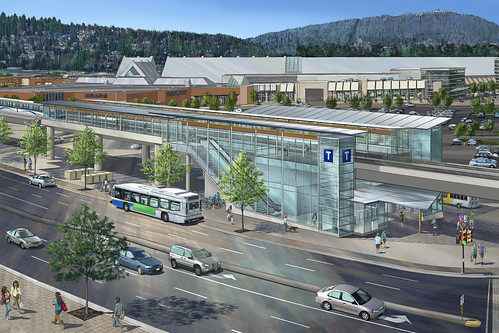ssiguy2
Senior Member
The thing with elevated heavy rail is exactly that..........it's heavy.
This means that any supporting columns need to be substantially larger and more of them. This adds to the cost but also effects the visual impact as well as being more expensive and disruptive to build. LRT columns are basically the same as SkyTrain but then you have to have the overhead wires which increases cost and can be quite unattractive.
None of the outer sections, east r west, have even got a shovel in the ground and no track has been laid in the tunnels so it is not too late. It make the system far more reliable, faster, and cheaper to maintain due to automation and SkyTrain having lower electrical consumption than either heavy rail or LRT. Also 70 meter SkyTrain stations with SkyTrain would still have far higher capacity than 90 meter LRT stations on an at-grade system due to running at far higher frequencies.
This means that any supporting columns need to be substantially larger and more of them. This adds to the cost but also effects the visual impact as well as being more expensive and disruptive to build. LRT columns are basically the same as SkyTrain but then you have to have the overhead wires which increases cost and can be quite unattractive.
None of the outer sections, east r west, have even got a shovel in the ground and no track has been laid in the tunnels so it is not too late. It make the system far more reliable, faster, and cheaper to maintain due to automation and SkyTrain having lower electrical consumption than either heavy rail or LRT. Also 70 meter SkyTrain stations with SkyTrain would still have far higher capacity than 90 meter LRT stations on an at-grade system due to running at far higher frequencies.






